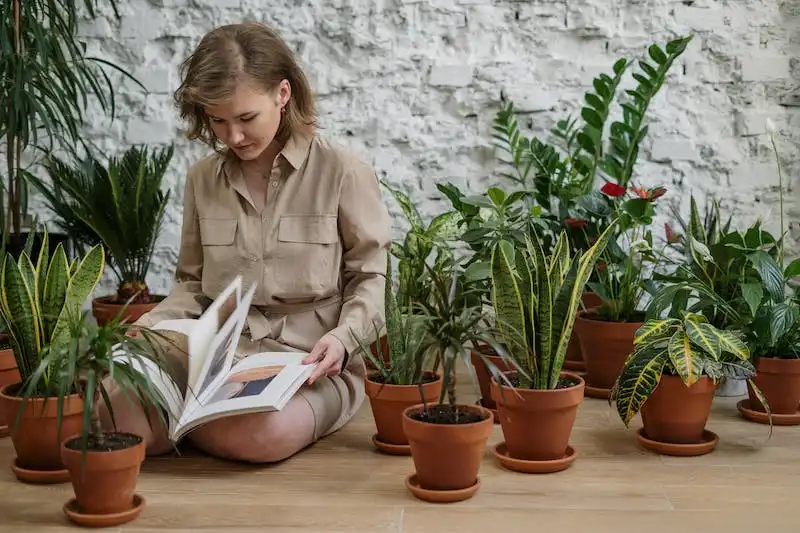Dumb cane plants, also known as Dieffenbachia, are popular houseplants due to their attractive foliage and ability to thrive in indoor environments. If you are interested in propagating your own dumb cane plants, there are several methods you can try, including layering, stem-cuttings, and air-layering. In this article, we will focus on the layering technique, which is particularly successful for propagating this tropical plant.
Layering is a simple and effective way to propagate dumb cane plants. The process involves taking a healthy stem from the parent plant and burying it partially in the soil. Soon, new roots will begin to form from the buried section, allowing the plant to spread and grow. To enhance root development, you may choose to use a rooting hormone, which can be applied to the cut end of the stem before burying it.
To start the layering process, select a stem that is at least half the height of the main plant. Make a diagonal cut just above a leaf node, ensuring that the cutting is approximately 2 to 3 inches long. If the stem has any yellow or drooping leaves, remove them with a pair of clean and sterilized scissors or shears. Moisten the cutting and dip the cut end into the rooting hormone, if desired.
Next, prepare a small planter filled with a moistened peat-based medium. Insert the stem into the planter so that the buried section is covered with soil and secure it in place with a toothpick or small stake. Cover the entire planter with a plastic bag or wrap to create a humid environment for the cutting. This will help to retain moisture and promote root growth. Place the planter in a warm and sunny spot, but avoid direct sunlight, as it can cause the cutting to overheat.
During the propagation process, it’s important to regularly check the cutting’s moisture levels. The soil should be kept consistently moist, but not soggy. If the soil feels dry to the touch, lightly water it to maintain the necessary moisture. Keep in mind that overwatering can lead to root rot and other problems, so always err on the side of underwatering rather than overwatering.
After a few weeks, you should start to see new growth and roots forming from the buried section of the stem. Once the cutting has an established root system, you can transfer it to a larger pot or the desired location. Be gentle when transplanting, as the roots may still be delicate. Ensure that the new plant has a stable and well-draining growing medium, and continue to care for it as you would a mature dumb cane plant.
It’s worth noting that Dieffenbachia plants are toxic if ingested, particularly for kids and pets. Therefore, it’s important to take proper safety precautions when handling or propagating these plants. Always wash your hands thoroughly after handling them and avoid rubbing your eyes or face. Additionally, make sure to keep these plants out of the reach of children and pets to prevent accidental ingestion.
In conclusion, propagating dumb cane plants through layering is a great way to expand your collection and share these beautiful houseplants with others. Follow the steps outlined in this article, and you’ll be well on your way to successful dumb cane propagation.
Dieffenbachia Propagation: 3 Methods for Success
Dieffenbachia, also known as the dumb cane plant, is a popular houseplant that can be propagated through various methods. If you wish to expand your collection or share this tropical plant with friends and family, here are three successful propagation methods to try.
- Stem cuttings: One of the easiest and most common methods for propagating dieffenbachia is through stem cuttings. To do this, snip a healthy stem from the parent plant, making sure it has at least two or three leaves on it. You can use a clean pair of scissors or pruning shears for this. Then, discard the bottom-most leaf and dip the cut end into a rooting hormone, as this helps stimulate root growth. Place the cutting into a moistened, peat-based rooting medium and keep it in a warm, sunny spot. In a few weeks, roots should start to develop, and you can then transfer the rooted cutting into a pot.
- Division: Another method for propagating dieffenbachia is by dividing a well-established plant. Find a healthy dieffenbachia with multiple stems or a large clump and carefully separate the roots and stems into smaller pieces. Make sure each piece has a good amount of roots and foliage to survive on its own. Plant these divisions in individual pots with a peat-based soil mix, and keep them in a warm and moist environment. Within a few days, the divisions should start to establish themselves and continue growing.
- Air layering: Air layering is a more advanced propagation method but can yield excellent results. Choose a healthy, upright stem and make a small cut about halfway through the stem. Then, apply rooting hormone to the cut section and wrap it with a moistened piece of sphagnum moss. Cover the moss with a plastic film to create a humid environment and secure it with tape. Keep an eye on the moss to ensure it remains moist. After a few weeks to a month, roots should start to form at the cut section. Once the roots are well established, you can cut the rooted section from the parent plant and plant it in a planter.
Regardless of the method you choose, make sure to follow these general steps for propagation success:
- Use healthy plant material for propagation.
- Ensure the rooting medium or soil mix is well-draining but retains moisture.
- Keep the cuttings or divisions in a warm and humid environment.
- Provide bright, indirect light to promote root and foliage growth.
- Be patient and give the new plants time to establish themselves. This process can take several weeks or even months.
In addition, remember to practice safety precautions when propagating dieffenbachia, as the plant’s sap is toxic and can cause irritation. Keep the plant out of reach of children and pets, and use gloves and a brush when handling the plant.
By following these methods and tips, you can successfully propagate your dieffenbachia and enjoy a thriving collection of these attractive tropical plants.
How to Propagate a Dieffenbachia Plant
Dieffenbachia plants, also known as Dumb Cane plants, are popular indoor houseplants due to their attractive foliage. If you want to propagate your Dieffenbachia plant, there are a few methods you can try.
1. Stem Cuttings: One of the best methods for propagating Dieffenbachia plants is through stem cuttings. Take a sharp and clean knife or pruning shears and cut a portion of the stem, making sure to include at least two leaf nodes. Remove any leaves from the lower part of the cutting. Dip the end of the cutting in a rooting hormone to increase the chances of success.
2. Leaf Propagation: Another way to propagate Dieffenbachia is through leaf propagation. Select a healthy leaf from the plant and carefully cut it into sections. Make sure that each section has a portion of the leaf vein. Plant these leaf sections in a well-draining soil medium, keeping them slightly moist. Place a plastic bag over the container to create a humid environment and improve the chances of rooting.
3. Layering: Layering is a method that can be used if your Dieffenbachia plant has long stems. Bend a stem down to the soil and make a small incision in the stem where it touches the soil. Dust the wound with rooting hormone and cover the portion of the stem with soil. Secure it in place with a wire or a toothpick. Eventually, roots will develop from the incision, and you can separate the new plant from the parent plant.
Regardless of the method you choose, make sure to provide the propagated Dieffenbachia plant with the proper care. Place the new plants in bright, indirect light and keep the soil consistently moist. Avoid overwatering to prevent root infection. Avoid placing Dieffenbachia plants in drafty areas or under cold temperatures, as they prefer warm and humid conditions.
By following these steps, you can easily propagate your Dieffenbachia plant and have new plants to enjoy in your home or garden. Remember to be patient and provide the necessary care, and soon you’ll have healthy, thriving plants.
Dieffenbachia Propagation From Stem-cuttings
If you’re looking to expand your collection of Dieffenbachia plants, one popular method is propagation from stem-cuttings. This is a relatively easy and reliable way to create new plants, as long as you follow a few simple steps.
First, select a healthy, well-established Dieffenbachia plant to take stem-cuttings from. Choose a variety that you like and that has been growing well in your indoor or outdoor surroundings. The stem should have a few leaves and be at least a few feet long.
Next, prepare a clean cutting tool, such as a sharp knife or garden shears. Make a clean cut just below a leaf node, which is where a leaf is or was attached to the stem. You can also make multiple cuts along the stem to increase the chances of rooting.
After taking the stem-cuttings, remove any excess leaves from the lower portion of the stem. This will help reduce moisture loss and prevent bacterial or fungal infection. If desired, you can also gently wash the stem-cuttings to remove any dust or dirt.
Now it’s time to prepare the stem-cuttings for rooting. Dip the cut ends of the stem in rooting hormone, which can help stimulate root growth. Be sure to follow the instructions on the rooting hormone package for the best results.
Next, prepare a rooting medium for the stem-cuttings. A mixture of peat moss and perlite or vermiculite works well. Pour the rooting medium into a container, making sure it is moist but not waterlogged.
Using your finger or a pencil, create planting holes in the rooting medium. Insert the stem-cuttings into the holes, making sure they are well supported. You can also use tape or a rubber band to secure the stem-cuttings to a small stake to keep them upright.
Finally, place the container with the stem-cuttings in a warm and brightly lit location. You can cover the container with a plastic film to help retain humidity and moisture. Just make sure to remove the film occasionally to prevent excess moisture buildup.
Over the next few weeks, the stem-cuttings should start to root and new growth will emerge. Once the new plants have rooted well, you can transplant them into individual pots or divide them into multiple plants, depending on the size and growth of the original stem-cuttings.
Remember to water the new plants regularly and provide them with the appropriate care and conditions for healthy growth. With proper care and patience, you can successfully propagate Dieffenbachia plants from stem-cuttings and enjoy a thriving collection of these beautiful foliage plants.




